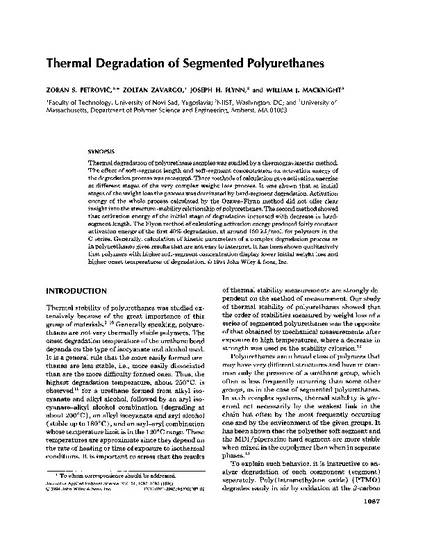
Article
Thermal Degradation of Segmented Polyurethanes
Journal of Applied Polymer Science
(1994)
Abstract
Thermal degradation of polyurethane samples was studied by a thermogravimetric method. The effect of soft-segment length and soft-segment concentration on activation energy of the degradation process was measured. Three methods of calculation gave activation energies at different stages of the very complex weight loss process. It was shown that at initial stages of the weight loss the process was dominated by hard-segment degradation. Activation energy of the whole process calculated by the Ozawa-Flynn method did not offer clear insight into the structure-stability relationship of polyurethanes. The second method showed that activation energy of the initial stage of degradation increased with decrease in hard- segment length. The Flynn method of calculating activation energy produced fairly constant activation energy of the first 40% degradation, at around 150 kJ/mol, for polymers in the C series. Generally, calculation of kinetic parameters of a complex degradation process as in polyurethanes gives results that are not easy to interpret. It has been shown qualitatively that polymers with higher soft-segment concentration display lower initial weight loss and higher onset temperatures of degradation.
Keywords
- thermal,
- degradation,
- segmented polyurethanes
Disciplines
Publication Date
1994
Citation Information
William MacKnight, Zoran S. Petrovic, Zoltan Zavargo and Joseph H. Flynn. "Thermal Degradation of Segmented Polyurethanes" Journal of Applied Polymer Science Vol. 51 (1994) p. 1087 - 1095 Available at: http://works.bepress.com/william_macknight/295/
